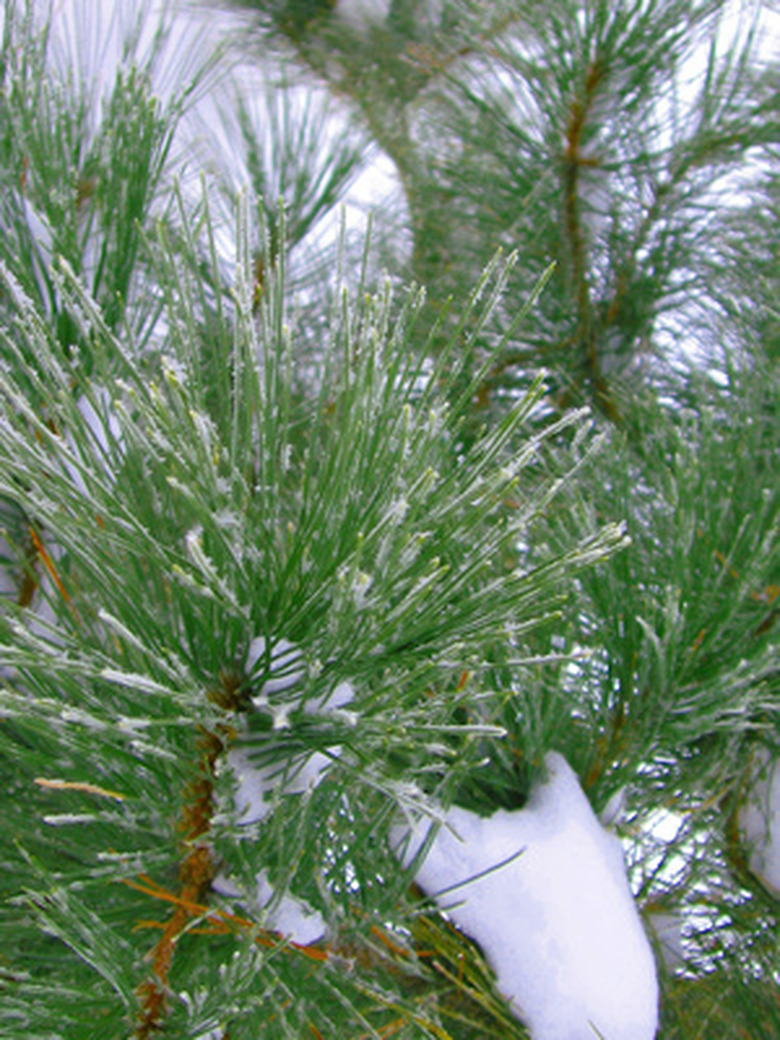Which Trees Are Used To Make Paper?
According to the National Forest Service website, as much as 85 percent of the trees used in the making of paper and paper products are coniferous. Hardwoods such as maples and oaks comprise the rest of the trees employed in this process. The reason for this is that the softwood conifers have wood composed of longer fibers than those of the hardwoods, a key factor in making paper stronger.
Balsam Fir
Balsam Fir
The balsam fir is a major tree in regard to paper production in Canada, with the tree's range covering most of the eastern section of that nation and a large part of the central area. Balsam fir grows to heights of 70 feet, notes the Ohio Department of Natural Resources. Balsam fir has other uses besides becoming paper pulp, as it is used for windbreaks, Christmas trees and wood paneling. Balsam firs grow best close to bodies of water and the species does well in acidic soil.
Western Hemlock
Western Hemlock
Western hemlock is a tree of the Pacific Northwest, growing in the western portions of northern California, Oregon and Washington, with parts of Idaho, Montana and British Columbia home to this conifer as well. Western hemlock grows taller and wider than any other hemlock species in North America, capable of reaching as high as 225 feet in an ideal setting. Western hemlock's lack of resin in its wood and the lighter color of its inner wood make it desirable as a tree for the production of certain types of paper, such as newsprint.
Balsam Poplar
Balsam Poplar
Balsam poplar wood's short and fine fibers are features that allow it to go into the making of paper products, including tissues. The tree, also called black cottonwood, is a hardwood species that grows across most of Canada and into northern New England and the Great Lake States. A tree that requires full sun to develop, balsam poplar frequently grows in pure stands, reports the "National Audubon Society Field Guide to Trees." The tree can grow to 80 feet tall and the resinous buds emit a pleasant balsam aroma.
Eastern White Pine
Eastern White Pine
Eastern white pine grows rapidly and can reach heights of 80 feet, with a spread of some 40 feet. The eastern white pine was once the most important tree in the northeastern U.S., as it was integral in the building of ships. It is still a prized species by the paper pulp industry and the long, straight trees go into the making of telephone poles. Eastern white pine grows over much of the East, but it was originally native only to New England, southern portions of Canada and parts of Appalachia.
References
- National Forest Service: Making Paper From Trees
- National Forest Service: Western Hemlock
- British Columbia: Black Cottonwood
- "National Audubon Society Field Guide to Trees"; Elbert L. Little; 2008
Cite This Article
MLA
Lindell, John. "Which Trees Are Used To Make Paper?" sciencing.com, https://www.sciencing.com/which-trees-are-used-to-make-paper-12358415/. 21 July 2017.
APA
Lindell, John. (2017, July 21). Which Trees Are Used To Make Paper?. sciencing.com. Retrieved from https://www.sciencing.com/which-trees-are-used-to-make-paper-12358415/
Chicago
Lindell, John. Which Trees Are Used To Make Paper? last modified March 24, 2022. https://www.sciencing.com/which-trees-are-used-to-make-paper-12358415/
